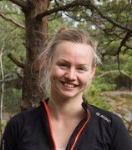
IUCN Species Threat Abatement and Restoration Metric
Louis Mair
- Research Associate, Newcastle University
The ASU Center for Biodiversity Outcomes and the Conservation Innovation Lab will host a talk by Newcastle University Research Associate Louise Mair, PhD. Mair will talk about the International Union for Conservation of Nature’s (IUCN) Species Threat Abatement and Restoration (STAR) Metric.
STAR is a novel metric that quantifies the potential contribution that threat abatement and habitat restoration actions could make to reducing global species extinction risk. STAR provides a framework for quantifying the potential contribution of the action targets within the proposed post-2020 Global Biodiversity Framework to the outcome goal of species conservation. It also allows other actors such as businesses to engage with conservation and measure their potential contribution.
Louis Mair works with Professor Philip McGowan and collaborates closely with colleagues from IUCN and the IUCN Species Survival Commission (SSC) to understand why global progress towards this target has been limited. She aims to understand the challenges in achieving Target 12 and to develop a decision-support approach that will assist countries in conserving threatened species.
The Aichi Biodiversity Targets cover the period 2011-2020, and Mair works with the IUCN SSC Post-2020 Biodiversity Task Force to provide the scientific basis for the next iteration of international species conservation targets. The Task Force works at the science-policy interface, collating and disseminating scientific research on species conservation to international policymakers at the Convention on Biological Diversity.
Mair's research background is in macro-ecology, with a focus on patterns and drivers of species distribution changes in response to climate change and land use. She is particularly interested in the application of citizen science data (CSD) to address ecological questions and has used CSD to quantify and understand changes in the distribution and abundance of British butterflies in response to climate change, and to project likely responses of old-forest indicator species of wood-decaying fungi to scenarios of forest management and climate change in Sweden.
10:00 - 11:00 a.m. PDT


